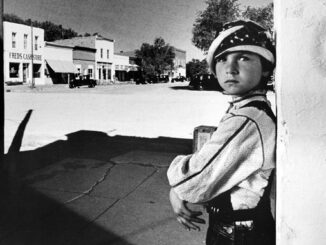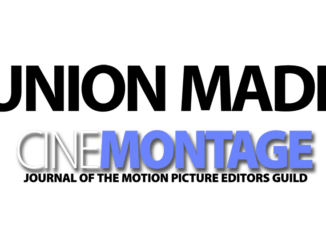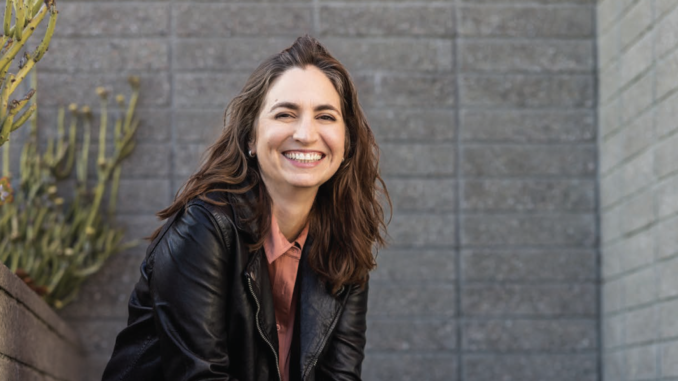
By Kristin Marguerite Doidge
The new Netflix film, “Rez Ball,” takes place in the heart of Chuska, New Mexico, where the Chuska Warriors, a high school basketball team rich in Native American heritage, face their greatest challenge. After the loss of their star player, the team must unite like never before to keep their dreams of a state championship alive. The result, which is available for streaming on Netflix, is a rich journey of resilience and unity — and a true underdog story deeply rooted in Native American culture.
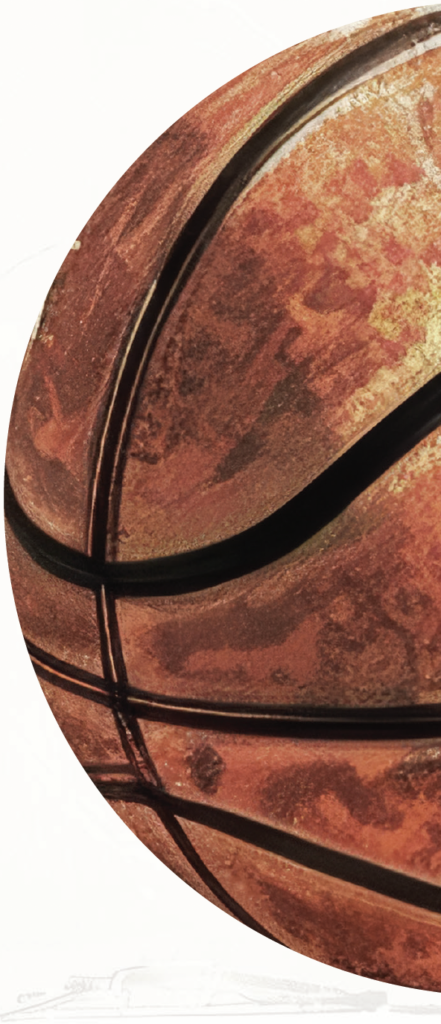 The film’s director, writers, and producers each bring their own passion for telling diverse stories. Producers Katie Elmore and Maurício Mota were previously behind the award-winning drama series “East Los High,” while LeBron James’ Springhill Company produced alongside Chernin Entertainment and Lake Ellyn Entertainment.
The film’s director, writers, and producers each bring their own passion for telling diverse stories. Producers Katie Elmore and Maurício Mota were previously behind the award-winning drama series “East Los High,” while LeBron James’ Springhill Company produced alongside Chernin Entertainment and Lake Ellyn Entertainment.
‘It’s a classic sports drama, but what makes it special are the place and the people.’
Native American (Navajo) filmmaker Sydney Freeland directed and wrote the script with Seminole filmmaker Sterlin Harjo. After working together on “Reservation Dogs,” they developed the script for “Rez Ball” (inspired by Michael Powell’s 2019 book, “Canyon Dreams: A Basketball Season on the Navajo Nation”) as a way to show the unique world of the reservation through the lens of basketball.
In signing on to “Rez,” picture editor Jessica Baclesse, who had just completed editing “Creed III,” realized she would now face a very different challenge: Instead of creating a space for originality in a well-known franchise with iconic characters the audience already knows in Adonis Creed and Rocky, she would be introducing audiences to a world they’re largely unfamiliar with and characters they haven’t met before. “It’s a classic sports drama in many ways, but what makes it very special is the place and the people,” she said. “All the kids on the team are Native, many of them first-time actors from different reservations, and the movie was shot on the reservation where Sydney grew up.”
Getting into the basketball quickly was essential in the crowded streaming universe in which modern audiences often find themselves. “Netflix puts a very big focus on the first five minutes of a film: how do you get people in? How do you hook them, and how do you get them to keep wanting to watch the film?” Baclesse continued, “That part of the edit went through many versions of trying to find the balance between pace, tone, and information, and also not let us get too far away from the actual basketball game. It was tricky because we needed to introduce an entire team of characters, so how do you accomplish all of that in five to six minutes? Sterlin and Sydney both
had a lot of thoughts around how do we get to the basketball, but how do we not lose the world we’re in?”
They accomplished this by having an intercut at the top between the opening of the first game that we see, and one of the teammates singing the National Anthem in Navajo. “By intercutting, we were able to give the song more momentum and excitement by going to the basketball,” she added. In fact, the sounds and music were key in helping to create an authentic sense of place throughout the film. Since Baclesse and Freeland both grew up in small towns, they remembered very clearly that the music they would listen to was a “funny mixture of rap and country.”
The music team, including Jim Bruening (music editor), Kier Lehman (music supervisor), and Dan Deacon (composer), worked with Freeland to capture the perfect palette of instruments, songs, and sounds to support the story.
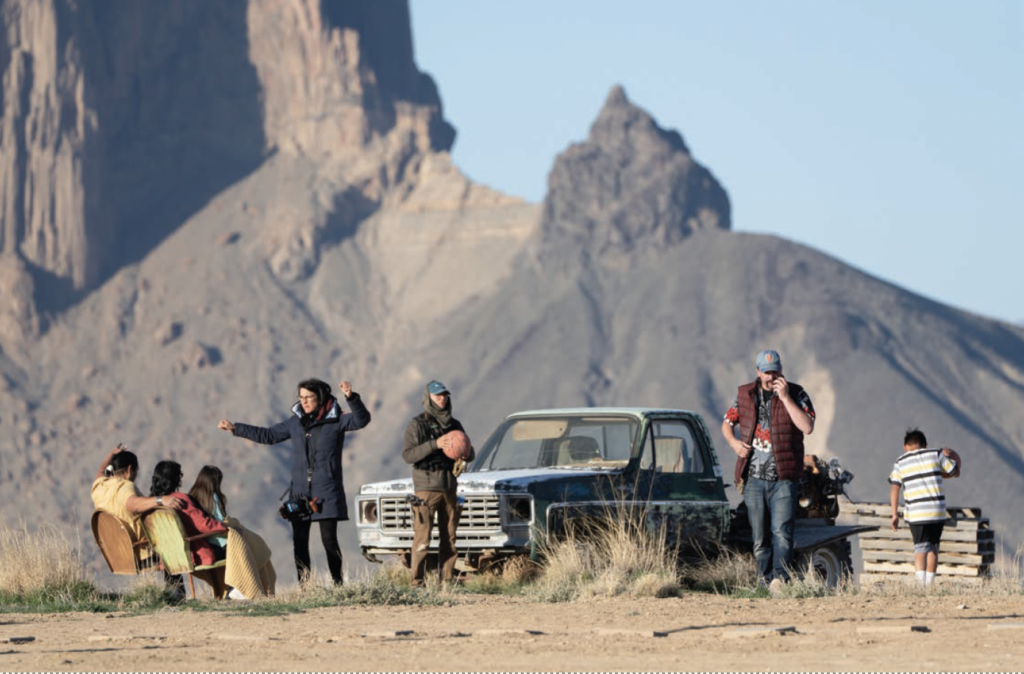
“Keir sent a huge amount of Native artists’ music while I was in dailies, which was an incredible resource,” Baclesse explained. “One of the things we found was that when it was used in the right spots, it worked great, but you wanted contrast. You didn’t want things to be back-to-back with one thing or another, so we would go from score into a needle drop from a Native artist, then go back into score, and maybe then go into more of a pop artist.”
The rhythm and tone of the quick-moving basketball sequences also had to be just right. James, whose Springhill Company co-produced the film, helped to be sure the basketball scenes were portrayed accurately.
“We were working right in the middle of his actual NBA basketball season,” Baclesse said. “He was a little busy, but his producer Spencer [Beighley] showed him and Maverick Carter all of the basketball sequences to find out: are there any notes? Are there things that aren’t feeling accurate? If this is a moment where they’re supposed to be making a mistake, is that working?”
But in addition to crafting the dramatic performances from the talented young actors in the edit, it was also important to allow opportunities for humor to shine through, Baclesse said. It took delicate shaping around what the actors were offering in the dailies to find when they needed to go fast, and when they needed to let it breathe or to sit with a particular character for another moment. She said the team of editors — Justin Rosen (assistant editor) and Britini Robinson (apprentice editor), who were on the film from dailies through director’s cut, and Elliott Traeger (additional editor) and Noel Bohdan (assistant editor), who came on for studio cut/preview screening and picture lock/finishing — worked together to find the right balance.
“One of the things that we realized is sure, we could cut out all the jokes and that would make the film move faster, but then we’re losing a big cultural element of the humor that exists—and then it’s not a full representation of this community,” she added. “We have to always be vigilant about not cutting it so tight that we lose those kinds of moments that make it memorable, that make you feel really connected.”
The script’s beauty was the foundation, she explained, but it’s that connection to the characters and their emotional journey that can make an audience care and pulls them into the story.
“Being able to bring people into a world they might not know anything about, or that they have preconceived notions about, I think is really special,” Baclesse said. “By allowing the Navajo people to be shown as messy and full of love and pain as much as anybody else—I think it is really important because it allows audiences to have a deeper understanding of the world and the communities around them, and hopefully challenges other types of very limited media portrayals that have existed for a long time.”



